Which electric lamps are better? How to choose an energy-saving lamp, useful tips
At major renovation or improving comfort in your apartment, house, cottage, etc., it is very important to focus on the choice and organization of lighting. 4 main types of household lamps are widely used, which differ not only in design and energy efficiency (consumption electrical energy), but also durability. Moreover, the cost increases with increasing efficiency and durability, which ultimately allows you to save by reducing the amount of electricity consumption.
And this is very important, given that in 2013 in the Republic, prices per kilowatt of consumed electricity repeatedly and significantly increased, and further, as the authorities predict, the rise in price will continue at an even faster pace. Therefore, do not save money today - buy and install energy-efficient lamps today, or at least replace the lamps in existing ones with more economical analogues.
1. Incandescent lamps.
The most common today are the usual old type of incandescent lamps, which are the leader in inefficiency, but are also the cheapest. Operating principle: in a special environment when passing electric current the spiral heats up and begins to glow. Its service life is no more than 1000 hours, and the efficiency (or percentage of transformation into light radiation) is less than 5% of the energy consumed. Therefore, this type of lamps is being discontinued in Europe and soon this trend will reach us. We recommend using incandescent lamps with a power of no more than 60 Watts, and where more light is required, use more economical analogues. I recommend using incandescent lamps only in the bathroom, hallway and bathroom, that is, where frequent switching on and off is required and the light does not burn for a long time, because these lamps are cheap, and more expensive ones, for example, with a regular base, inexpensive energy-efficient fluorescent lamps do not last long - due to frequent switching on.
2. Halogen lamps.
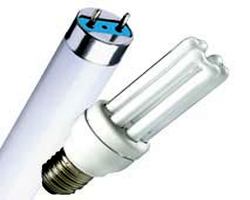 is structurally similar to incandescent lamps and differs only in the addition of a halogen buffer gas cylinder with a spiral inside, due to which not only the lamp life increases to 2500-4000 hours, but also the efficiency is three times higher, i.e., the power of a 30 halogen lamp will be as much give the same amount of light as a regular 90 W incandescent light bulb.
is structurally similar to incandescent lamps and differs only in the addition of a halogen buffer gas cylinder with a spiral inside, due to which not only the lamp life increases to 2500-4000 hours, but also the efficiency is three times higher, i.e., the power of a 30 halogen lamp will be as much give the same amount of light as a regular 90 W incandescent light bulb.
When purchasing, it is important to pay attention and take into account the scattering angle of the light beam from a halogen lamp, which can be either narrow, medium or even wide. A narrow angle is useful for concentrating light in a specific desired location, such as where you often read, but it will not be enough for efficient lighting toilet or bathroom.
Attention, the halogen lamp is afraid of any appearance of dirt on its surface! Never touch it, even with washed hands - this will subsequently lead to its breakage due to quite high temperature heating When replacing it, take a new one and insert it only in the package.
In my home I use halogen lights built into the ceiling only in the bathroom and toilet.
3. Fluorescent lamps.
Economical fluorescent lamps, which are a gas-discharge light source, are widely used today in offices, homes, apartments and garages. The principle of operation is simple: inside the lamp, in a specially created environment with mercury, a discharge is formed and constantly maintained, the energy of which is converted into light by a special substance - phosphor, covering the inner surface of the lamp bulb. The efficiency of such a lamp is 5 times higher compared to an incandescent lamp and allows you to get the same amount of light with a power of 15 W as from a 75 W conventional light bulb!
Today, compact fluorescent lamps (CFLs) with a regular base, designed to quickly replace conventional ones with more economical ones, are widely advertised and sold.
In all the rooms and in the kitchen in my house there are only fluorescent lamps.
Attention! This type of lamp contains mercury from 2 to 60 mg inside. Mercury vapor is extremely dangerous to human health, so I recommend taking it to special collection points for fluorescent lamps. In the Republic of Belarus, you can always find out addresses in City or District Electric Networks (RES).
4. LED lamp.
For the home, it is best to use ordinary incandescent lamps, halogens in all their forms, or. They are safe for humans and are available in most Svet stores. Compact halogen lamps or small globe-shaped incandescent lamps can be selected for almost any home lamp. They can be used even in very small devices for home lighting, where space for light sources is minimal. Wide choose halogen and incandescent lamps with original bulbs, allows them to be used in lamps where light sources are open to public viewing, for example in crystal chandeliers or chandeliers with candles. Prices for incandescent lamps are low. Prices for halogen lamps are slightly higher, but comparable to incandescent lamps when taking into account their service life. LED lamps are more expensive than their older counterparts, but their service life is longer. LED lamps for spotlights are very effective. Let us now substantiate these statements.Next, the features of lamps for the home will be considered and studied. We'll consider different kinds decorative incandescent lamps and energy-saving light sources, directional mirror lamps and small compact light bulbs for lamps. Let's try to understand which light sources are best used for the interior of the house, and which ones are better not to use. Let's figure it out what lamps are best for home in terms of safety and which ones not. But first, let's look at what bases light bulbs are produced with today household use. Below is a picture with examples of standard sockets for household lighting sources.
The name of the socles is deciphered as follows. In the E27 threaded base, “E” denotes the type of base, “27” is the thread diameter in millimeters. In the pin base B22, “B” is the type of base (bayonet), “22” is the outer diameter along the pins of the base. The method of connecting a lamp and a lamp using a threaded metal bulb was developed by Thomas Edison in 1909. Not much has changed since then. In Russia, light sources with threaded bases E14 and E27, very rarely pins B15 and B22. In the USA, for example, lamps with sockets E26, E12 and E10 are considered standard. In most countries of the world where voltage is electrical network is 220 Volts, using E14 and E27 sockets.
Today there is a huge number of different household light sources, which differ in operating principle, type of base, size and purpose. In this diversity I would like to highlight separately decorative light bulbs, since they combine two purposes at once. Decorative light bulb - decorates the lamp in which it is installed, and also illuminates the room where it operates. Let's consider what types of decorative lamps there are and for what lamps they can be used. We will talk about classic light sources for the home with an E27 or E14 base, designed for 220 Volts.
Candle in the wind
Several types of lamps for lighting fixtures fall under this concept: flicker lamps, energy-saving light sources or incandescent lamps in the shape of a flame. Most of all, the phrase “candle in the wind” corresponds to the so-called flicker lamps (flicker - from English to flicker, sparkle, blink). These lamps emit the flame of a candle, the flame of a burning wick. Such “candles” usually give off very little light, but look very impressive. From a distance of three meters or more, a switched-on lamp is practically indistinguishable from the fluttering of a real flame that sways in the wind. These “candles” can be used without lampshades or shades; the light from them is minimal, but the visual effect is impressive. Flickers can decorate a crystal chandelier with candles or a table lamp in the form of a candelabra. The use of these light bulbs is relevant if a chandelier or sconce in the room is needed more for beauty than for illuminating the space.
Energy-saving lamps and incandescent lamps in the form of a candle flame are used in lamps where the bulbs are completely open and visible to others. The concept of a “candle in the wind”, in this type of lamp, refers more to the shape of the glass in which the light element is enclosed than to the principle of operation of these lamps. Energy-saving lamps have glass bulbs that are usually frosted. Frosted glass May be white or have some kind of shade. Flame-shaped incandescent lamps can be made with frosted or clear glass. Frosted glass can be of various shades. Transparent glass may have a slight tint of gold or bronze, or be slightly tinted. In addition, these lamps are also available with other decorative effects. Such lamps can be used not only as a decorative element, but also for their intended purpose. In terms of luminous intensity, they are no different from comparable lamps of ordinary shape.
Candle-shaped light sources with a twisted bulb
These lamps can be either energy-saving or conventional incandescent lamps. Distinctive feature These light sources are a bulb, which has the shape of an elongated truncated spheroid with a twisted glass surface. The flask is somewhat reminiscent fir cones. As a rule, the bulb is matte if it is an energy-saving light source. The bulb can be matte or transparent if it is a regular incandescent or halogen lamp. The colors and shades of the flasks can be anything. Sometimes they are additionally decorated various materials. The luminous intensity from light bulbs with a twisted bulb is almost no different from the luminous intensity of similar lamps with a simple bulb. Decorative twisted lamps are used in home lamps, where the lamp is clearly visible to others, where the light source is not covered by a lampshade or lampshade.
Balloons
Small lamps with a bulb-shaped bulb. Such sources can be installed in a luminaire where space is limited. Balls can be matte, colored or transparent. The bulbs of these lamps are spherical in shape and, as a rule, are not decorated with anything. Ball-shaped lamps can be used in small ceiling chandeliers, wall sconces, small table lamps and in other lamps where a standard lamp may protrude unattractively from behind the shade or may not fit at all. Similar lamps include small lava lamps or hanging chandeliers in the style of "floristry". The height of the ball lamp with an incandescent filament is in the range of 71-74 mm. These light sources can be found with various sockets, but most often they are produced with E27 and E14 sockets. It should be noted that the smallest energy-saving lamps are slightly larger than miniature spherical incandescent lamps. Sometimes the smallest energy-saving light bulbs do not fit into the lamp, since it was designed for the use of ball lamps.
Mirror lamps - lamps
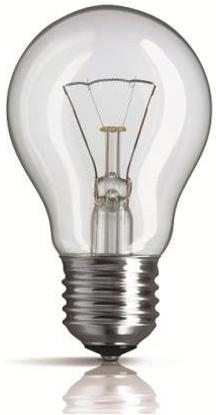 Incandescent lamps or energy-saving lamps, in which part of the bulb is coated with a reflective composition. This composition creates mirror surface, which reflects light from the filament into the bulb and does not allow it to pass out. Light only comes out through the transparent part of the glass, which is not mirrored. The lamp bulb can be covered from the bottom. This lamp is used as a lamp with a directed beam of light. Such lamps are used to illuminate shop windows, signs and other objects that need to be distinguished from their surroundings and on which attention needs to be focused. The second version of a mirror lamp is a light bulb in which the bulb is covered with a reflective composition on top. Such a lamp does not emit direct rays from the filament towards the objects it illuminates. Light, as a rule, first falls on the diffuser and only then hits the object of illumination. These lamps are often used in luminaires with parabolic reflectors when soft, even diffused light is needed. Mirror lamps can be produced with a spherical bulb or with a bulb classic shape. Lamps are made from transparent, frosted and colored glass.
Incandescent lamps or energy-saving lamps, in which part of the bulb is coated with a reflective composition. This composition creates mirror surface, which reflects light from the filament into the bulb and does not allow it to pass out. Light only comes out through the transparent part of the glass, which is not mirrored. The lamp bulb can be covered from the bottom. This lamp is used as a lamp with a directed beam of light. Such lamps are used to illuminate shop windows, signs and other objects that need to be distinguished from their surroundings and on which attention needs to be focused. The second version of a mirror lamp is a light bulb in which the bulb is covered with a reflective composition on top. Such a lamp does not emit direct rays from the filament towards the objects it illuminates. Light, as a rule, first falls on the diffuser and only then hits the object of illumination. These lamps are often used in luminaires with parabolic reflectors when soft, even diffused light is needed. Mirror lamps can be produced with a spherical bulb or with a bulb classic shape. Lamps are made from transparent, frosted and colored glass.
Halogen
The principle of operation of a halogen lamp is no different from a conventional incandescent lamp, except that the bulb of a halogen lamp contains gas mixture from halogen substances. Halogens slow down the destruction of the filament during lamp operation. The features of these light sources are stronger light with less electricity consumption, compact size, longer service life compared to conventional incandescent lamps. Halogen lamps are available with various sockets, including E14 and E27 sockets. Halogen lamps for the home can most often be found in spotlights, various directional lighting and in ordinary lamps. The compact dimensions of halogen lamps, as well as halogen lamps designed for low voltage, open up great opportunities for the implementation of various design ideas. The advantages of halogen lamps over conventional incandescent lamps are obvious, although the price of halogen lamps is slightly higher than conventional light bulbs. Manufacturers of halogen lamps emphasize all the advantages of their products, right on the packaging, clearly demonstrating their advantages. The types of halogen lamps are as varied as the types of simple light sources.
Energy-saving lamps
There are two more types of light sources that should be described. Compact fluorescent lamps, which are often called energy-saving and LED bulbs , which are energy-saving light sources, but are usually called LED lamps or LED lamps. Both can and are produced with standard E14 and E27 sockets. These light sources can be installed in household lamps and connected to standard mains voltage. Compact fluorescent light bulbs (CFLs) save energy consumption, but their sizes are not as compact as their name suggests. Energy savings are also highly questionable, since they are expensive, and their service life, in Russian conditions, is not as long as the manufacturers claim. In addition, fluorescent light sources contain mercury, which is toxic to humans. LED lamps, which belong to the class of energy-saving light sources, cost even more than CFLs, but the energy savings when using them are beyond doubt. LED lamps are poorly represented on the market of household light sources, although their potential is enormous.
Our review is not very in-depth, and is not replete with technical characteristics or calculations of the economic benefits of a particular light source. But we hope that it will help you with the choice of lamps for pendant lamps and chandeliers. We will be glad to receive your comments and remarks.
The most economical lamps for the home are not those that consume the least amount of electricity, but those that have the lowest operating costs under specific conditions.
Technological progress does not stand still; new developments are constantly appearing in the industrial and domestic spheres. Lighting fixtures are no exception. In less than a century, we have gone from torches to LEDs.
Each new step led to the emergence of more reliable, more economical devices. At the end of the 19th century, the incandescent lamp appeared, at the beginning of the 20th century, the fluorescent lamp, and at the end of the 20th century, LED technologies came into fashion.
When purchasing a replacement for another burnt-out light bulb, most people face the dilemma of choosing the best option in terms of reliability and material costs.
All lighting sources for domestic purposes can be classified according to light emission technology:
- Incandescent lamps;
- halogen;
- luminescent;
- LED
What lamps are the most economical for an apartment?
Which light bulb to choose for your home depends primarily on what rooms it is intended to illuminate. Although the most economical light bulbs LED lights are rightfully considered for the home; their low energy consumption does not always justify other operating costs.
Interesting fact!
The energy consumption of three incandescent lamps installed in the living room during the year will be about 500 kW, which is equivalent to the monthly needs of a three-room apartment.
Let's look at the advantages and disadvantages of each type of lighting source.
Incandescent light bulbs
 Incandescent filaments are the most morally and technically outdated type of lighting source. Compared to other representatives of the evolutionary line of lighting devices, incandescent lamps have the lowest luminous efficiency and short service life. But with all this, there are still situations when it is not advisable to use more technologically advanced lighting sources.
Incandescent filaments are the most morally and technically outdated type of lighting source. Compared to other representatives of the evolutionary line of lighting devices, incandescent lamps have the lowest luminous efficiency and short service life. But with all this, there are still situations when it is not advisable to use more technologically advanced lighting sources.
Lighting in the toilet room, pantry, on the balcony - in such rooms the light bulb turns on often, but not for long. Although the lifespan of a fluorescent and LED lamp is significantly longer than an incandescent one, when turned on frequently, failure is more likely not of the light-emitting element, but of the ballast cascades - electronic ballasts for LDS and power driver for LEDs.
With such operating modes, the life of any lamp is reduced significantly, and the energy savings do not cover the difference in their cost. Based on this, for such premises optimal choice the good old Ilyich light bulb remains.
Fluorescent light bulbs
Fluorescent lamps (LDS) are linear type with external electronic ballast and integrated starting device.
Linear lamp with separate block ballast costs a little more than integrated solutions, but they are more profitable in operation, since if it fails, replacing it will cost an order of magnitude cheaper than buying a light bulb with a built-in starter. But a linear fluorescent lamp cannot be screwed into an ordinary chandelier; it requires a special reflector.
In terms of energy efficiency, fluorescent light sources are close to LED ones. They have a luminous efficiency of about 60-70 Lm/W, while LEDs have 80-90 Lm/W.
What to give preference to, which lamps are more economical?
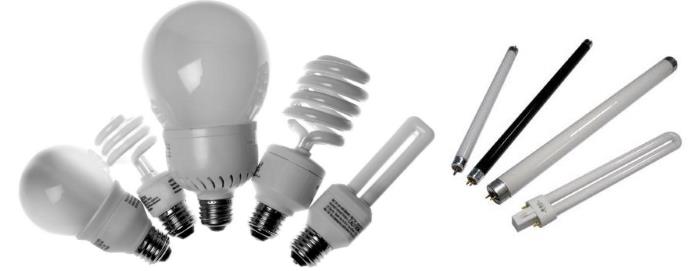
If you need an option with an E27 base for a standard chandelier socket, key criterion There will be a duration of active use during the day. For the corridor, kitchen, bathroom, it is more rational to install LDS. The difference in energy consumption when turned on for 2-3 hours during the day will be insignificant even on the scale of several years of operation, and the initial costs of purchasing fluorescent lamps are significantly lower.
LED light bulbs
 Diodes are the most economical light bulbs for the home. A light bulb with diodes for an E27 base, with a power of only 50W, produces a record 3000 lumens, which corresponds to five 100W incandescent lamps. Even one such lamp is enough to illuminate any spacious room. But I’ll tell you a secret, five 10W LED bulbs will cost much less than one 50W.
Diodes are the most economical light bulbs for the home. A light bulb with diodes for an E27 base, with a power of only 50W, produces a record 3000 lumens, which corresponds to five 100W incandescent lamps. Even one such lamp is enough to illuminate any spacious room. But I’ll tell you a secret, five 10W LED bulbs will cost much less than one 50W.
For constant room lighting, this type is most preferable. Considering that in a living room the light bulbs are on for 5-6 hours during the day, and this is more than 2000 hours a year, within a couple of years the LEDs will recoup the initial investment, subsequently guaranteeing net savings. Even with life cycle diodes in 10,000-15,000 hours is 5-7 years.
N.B. Rapid growth in popularity LED lighting inevitably led to the appearance on the market of a large number of cheap but low-quality products. You can find an LED lamp at the price of a fluorescent lamp, but be prepared for the fact that its actual brightness will be an order of magnitude lower than that indicated on the packaging. Yes and parameters luminous flux The fakes are far from ideal. We recommend that you refrain from purchasing such lamps in order to save money and nerves.
conclusions
When choosing lamps for an apartment, it is not enough to take into account their energy consumption and service life. Installing a system for smooth ignition of the spiral at the filament significantly increases its service life, and daily repeated switching on of LEDs can lead to their failure by the time they recoup their cost.
| Optimal type lighting for various rooms | |
|---|---|
| Room type | The best option lamps |
| Rooms with a high frequency of switching on/off relative to the operating time of the lamp (pantry, toilet room, other technical and special purpose premises). | Incandescent |
| Temporary premises with lighting use up to 3 hours a day. | Fluorescent light bulbs |
| Premises with long stays ( living rooms) and lighting of workplaces. | LED |
Electricity tariffs are rising every day. People increasingly began to think about saving issues. Modern industry and science did not stand aside. Thus, energy-saving lamps first appeared on sale, followed by LED lamps. But since the market is crowded various options in different price categories, people get confused and don’t know which light bulb is better - LED or energy-saving. In this article we will try to compare the two technologies and consider the advantages and disadvantages of each.
About fluorescent lamps
Compact luminescent products are distinguished by a curved bulb shape. Thanks to this design, the light bulb can be easily placed even in small lighting fixtures. Its flask contains inert gases. This can be argon, neon and mercury vapor, and inside the body of the luminescent part is coated with a layer of phosphor.
If such a device is exposed to high voltage, then electrons begin to move in it. At the moment of collision of the latter with mercury, ultraviolet radiation invisible to the eye is created. It then transforms into visible to man light due to a layer of phosphor.
A fluorescent lamp consists of three elements:
- base;
- electric ballast;
- flask.
These types of energy-saving light bulbs for the home can be arranged differently. It all depends on the variety.
A variety of fluorescent lamp shapes: linear

Luminescent products can be ring-shaped, straight, or have U shape. For example, a straight line with two bases resembles a glass tube. At the ends of this tube there are special glass legs on which the electrodes are fixed. On inner surface The glass tube has a phosphor layer.
Such economical light bulbs for the home may differ in their diameter, length, and base width. The longer and thicker the tube, the more energy the light bulb consumes. Most often these products are used in everyday life, in office premises, at various production facilities. Compact fluorescent light bulbs are now widely used. Their “lineal” relative is their ancestor and is gradually leaving the lighting market.
Compact energy-saving fluorescent lamps
On domestic market Light sources often offer imported products.
These are widespread trade marks, like General Electric, Philips, Osram and others. All products differ depending on specific features. Many of these companies also produce LED lamps. If there are difficulties in how to choose an LED light bulb for your home, it is better to buy something popular. Below we will look at their classification.
Classification of luminescent products

Lamps are distinguished primarily by their base:
- The 2D base is used for devices intended for decorative lighting and for use in showers.
- G23 is suitable for both bathrooms and shower rooms.
- 2G7 is used in industrial as well as household appliances.
- E27 socket are lamps for conventional sockets. Such models are widespread on the market.
- E14 is used with a small chuck, and E40 with a large chuck.
Electric light bulbs for the home with sockets for regular and small sockets are as easy as possible to install. The numbers correspond to the thread diameter. The service life of such products from various manufacturers ranges from 4 to 16 thousand working hours.
The industry produces them with an open tube and diffuser. The bulb diameter of the bulb can be from 7 to 17 mm. And its shape can be U-shaped with three, four, or six souls.
In addition to those described, lamps in the form of a spiral are produced. Spiral products have slightly smaller geometric dimensions than U-shaped ones. But in terms of power they are equivalent. Appearance and form do not affect functionality in any way lighting fixture. As for the cost, a spiral lamp will cost more, since their production technology is more expensive and labor-intensive.
Advantages of fluorescent lamps
![]()
The described products make it possible to significantly (up to 80%) reduce electricity costs. At the same time, the luminous flux will remain the same as that of a traditional incandescent lamp.
Another plus is its long service life. The product will burn effectively for up to 15 thousand hours. This is 6-14 times longer than the life of an incandescent lamp and allows them to be installed in hard-to-reach places to eliminate frequent replacement. An energy-saving lamp can have different color temperatures. The colors of the light flux also differ:
- 2700 K is warm white light.
- 4300 K - daily.
- 6500 K - cool white glow.
Light
The main advantage of these products is the low amount of energy required for operation. Thus, an LED part with a power of only 10 W is capable of producing the same amount of light as a 60 W incandescent lamp.
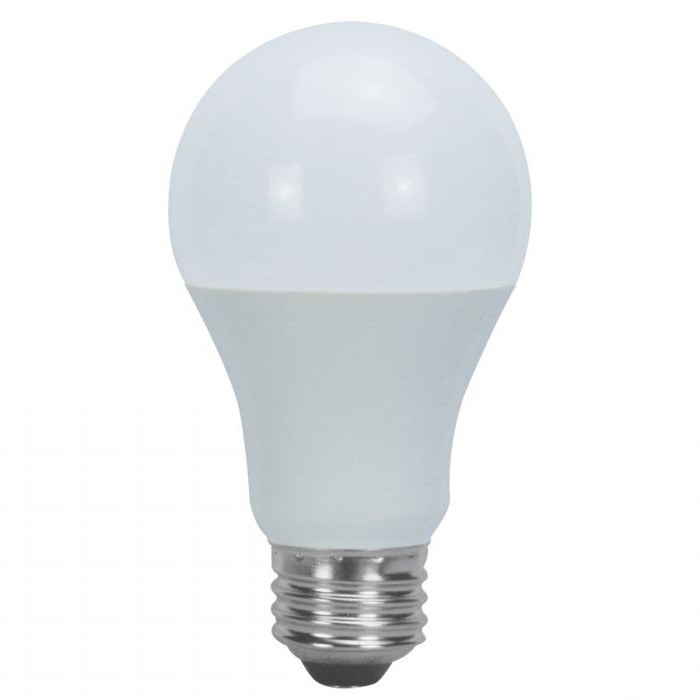
The second advantage is the service life. Various manufacturers They claim 30-50 thousand hours. This is approximately 20 years of operation. Another significant advantage is that LED source The light does not heat up during operation, which means it completely eliminates the risk of fire. You can also carry out the most daring experiments in interior design with them. LED lamp bases are universal and can be used in any type of lamps and chandeliers.
Another significant advantage is the absence harmful substances in the case and high environmental friendliness. The glow of the LED bulb does not strain the eyes. And the only one significant drawback- this is the price. Although the cost LED part only two times higher than ordinary luminescent. But despite the cost, these are the most best light bulbs for home.
Types of LED Products
They differ in design, as well as depending on the area of use they are intended for. There are household LED lamps, LED products for illuminating interior details, parts for use in architectural objects and landscape design.
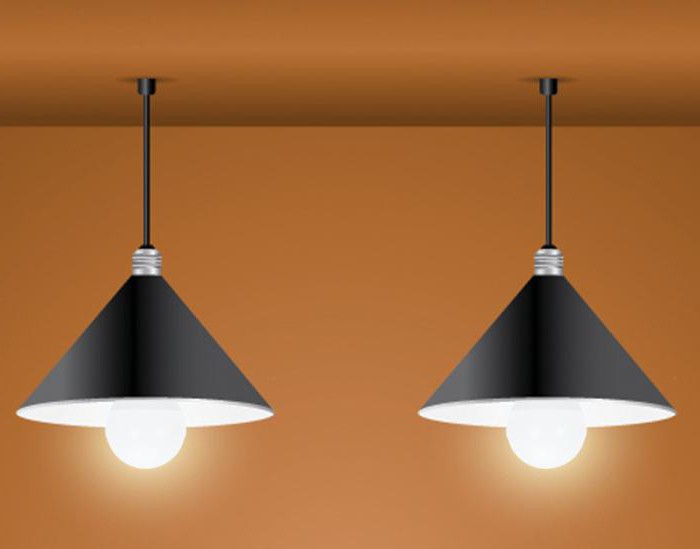
There are explosion-proof, street lamps, industrial floodlights. If you analyze all the advantages of LED products, then you don’t even have to think about which light bulb is better - LED and energy-saving. With all its advantages, the energy-saving one still loses to its LED relative. The choice is obvious - this is a significant saving of money.
LED or fluorescent: comparison
The market offers LED and energy-saving light bulbs. Comparing them shows that both options are quite economical and have a long service life. However, if we take a closer look at the main specifications, the LED lamp in many ways outperforms energy-saving lamps.
Relatively high price will pay off over the years. When organizing lighting in an apartment, especially if the volumes are large enough, only LEDs are used due to their service life, efficiency, variety of shapes, and high environmental friendliness. Energy saving is not suitable for installation in suspended ceiling. She gets very hot. Stretch ceiling may also melt.
If you think about which light bulb is better - LED or energy-saving - then the former are more suitable for all rooms in the apartment, and the latter - for kitchens and corridors.
Features of choosing LED products
The market is overflowing with products from foreign brands, domestic and Chinese manufacturers.
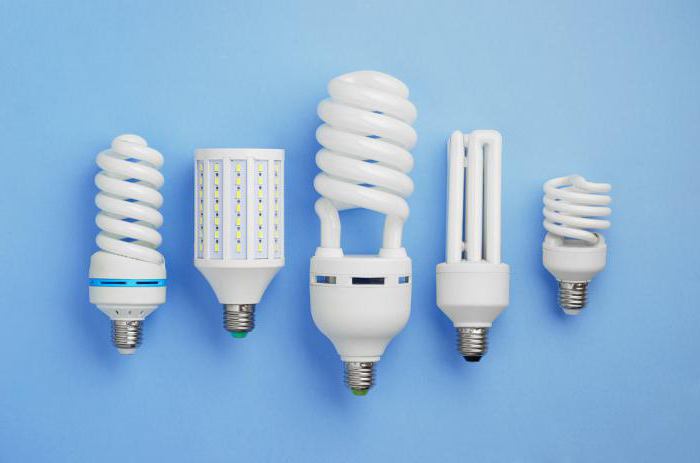
Therefore, many people have certain difficulties when choosing. And they don't know exactly how to choose an LED light bulb for their home. This should be done based on the purpose of the lighting, various technical requirements, as well as the type and area of the room. After all points are taken into account, choose the type of lamp and its appearance.
You can choose by cost, shape, required power. And of course, it is better to buy an expensive lamp from famous brand. This is reliability and long years services.
Which lamp is better?
To find out which light bulb is better - LED or energy-saving - pay attention to environmental friendliness. Energy saving products are great for non-residential premises. These lamps contain poisonous mercury in their housing, so they should not be used for home lighting. LEDs, on the contrary, are ideal for residential premises, do not heat up and are completely environmentally friendly.
So, answering the question of which light bulb is better - LED or energy-saving - experts recommend using diode products.
We present lamps for lighting and growing plants: LED phytolamp, Osram fluora, fluorescent, incandescent and gas-discharge. We will tell you which lamp is best suited for growing, lighting and growing plants and flowers.
Lamps for lighting and growing plants: types
Every experienced gardener understands the importance of lighting and the role of lamps for indoor plants and flowers, especially in autumn, winter and spring.
It is at these times of the year that many plants need additional lighting or even constant artificial lighting with the help of special phytolamps.
In this regard, the question arises: “What is the best lamp to use for lighting and growing plants and flowers?”
For additional lighting of indoor plants you can use Various types lamps: incandescent, fluorescent, gas-discharge and LED.
Each type of lamp has its own advantages and differs in efficiency of use.
Incandescent lamps
A standard incandescent lamp is low efficient and has many disadvantages (low light intensity and service life, heating, light spectrum only promotes vertical plant growth (lots of red and very little of blue color), high energy consumption).
They can only be used when large quantities light in winter in southern latitudes (length of daylight hours 10-12 hours) in greenhouses and winter gardens as evening lighting.
Incandescent bulbs work well for short-stemmed, long-leafed plants or long-stemmed vines.
Incandescent lamps for plants have a special reflective surface and produce a spectrum of light with a peak in the blue and red ranges.
- Basically, incandescent lamps are used as an additional source of light with red rays together with cold (4000K or 6400K) lamps.
T8 fluorescent lamps for plants
The lamp spectrum is close to daylighting(6500K – daylight), economical energy consumption.
Most indoor plants grow well and many bloom (Saintpaulia, impatience). This is the basic option for artificial lighting indoor plants and seedlings.
There are special phytolamps for indoor plants, for example: osram fluora.
The emitted light of phytolamps occurs in the red and blue spectrum (we see pink-violet color), which activates photochemical processes and improves the growth and development of plants.
OSRAM FLUORA FLUORESCENT LAMPS FOR PLANTS
For those who have a lot of young plants or with a great need for light, it is better to buy special phytolamps like osram fluora for plants.
Osram fluora fluorescent lamps for plants are 10-12 times more expensive than conventional fluorescent lamps, but have the best spectrum among all types of lamps.
The balance of blue and red with the peaks of these two colors is close to the ideal ratio. They can also be combined with a standard 765 or 840, 865 lamp.
- OSRAM L 18 W /77 FLUORA - 18 Watt (60 cm), or OSRAM L 36 W /77 FLUORA - the same, 36 Watt (120 cm) T8 type.
Gas-discharge lamps (mercury (DRL), sodium (DnaT) and metal halide)
They are divided into mercury (DRL), sodium (DnaT) and metal halide.
1. MERCURY VALVES
In this group they are less effective and useful.
2. SODIUM LAMPS
This type of lamp has a number of advantages. Sodium lamps high pressure very different high efficiency, luminous flux power and long service life (12-20 thousand hours).
They are most often used in lighting large area: greenhouses, greenhouses, winter gardens. They are not recommended for use in residential areas due to their very high light output. You can try it on a remote loggia or balcony.
The spectrum of the lamp contains many red rays; it is useful for root formation and flowering of plants.
- For maximum efficiency, they must be combined with mercury or metal halide lamps.
A 250 W sodium lamp in a special lamp provides illumination of 15 thousand lux on an area of 1 sq.m.
3. METAL HALIDE LAMPS
This type of lamp, according to experts, is the most perfect for artificial lighting of plants.
Metal halide lamps have high power, long service life and an optimal luminescence spectrum, but also a fairly high price.
Nowadays they produce lamps with a ceramic burner (Philips (CDM), OSRAM (HCI)) with a high color rendering index (CRI=80-95). Domestic analogues can be found in the DRI series.
Light Emitting Diodes (LED)
Advanced LED technology has a number of advantages. LED light bulbs have a long service life and minimal energy consumption.
In order for the plant to receive red and blue rays, the lamp must contain LEDs of these two colors at the same time in a ratio of 8:1 or 8:2.
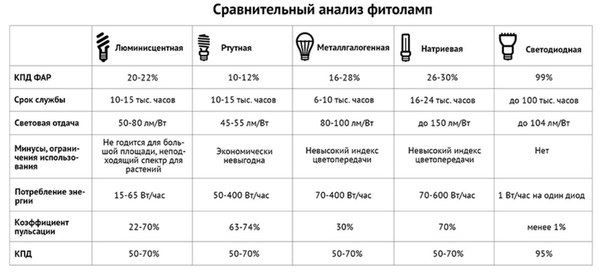
Lamp color temperature
Color temperature is measured in Kelvin (K).
2700K– “warm” light / Warm light – radiation predominates in the red part of the spectrum, incandescent lamp light. Other types of lamps produce a glow close to that of an incandescent lamp. This type of glow is used for flowering.
4100K– “neutral white” light / Cool light – radiation across the entire spectrum, with a predominance in the green part.
6400K– “day or cool white” light / Day light – radiation predominates in the blue part of the spectrum, which is suitable for vegetative growth.
8000–25000K– ultraviolet / Black light – ultraviolet radiation.
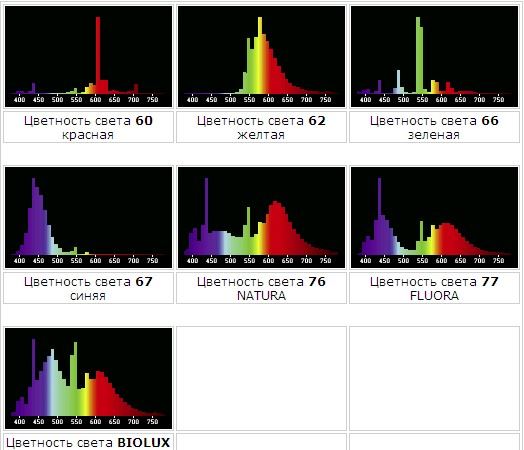
What lamp power is needed to grow and illuminate plants?
The choice of lamp power is influenced by: the height of the lamp above the plant, the presence of a reflector and the group to which the plant belongs (bright light, moderate or weak (penumbra)).
UNIVERSAL FORMULA
Per 1 m2 of grown plants middle group illumination requires 400 W of incandescent lamp power or 5500 lumens.
Those. a shelf 1 meter long and 0.5 meter wide with plants will need 2750 lumens.
A height of 30 cm reduces the luminous flux from the lamp by at least 30% and it turns out that you need three T8 fluorescent lamps of 36 W each. If the lamp does not have a reflector, then the luminous flux is reduced by another 30% and another 36 W lamp is needed.
- For shade-tolerant plants light is needed by 30-40% less, and for light-loving people (bright light) more by 30-40%, respectively, the luminous flux from light bulbs.
- According to the experience of gardeners, it is quite enough: tropical plants, citrus fruits, monsteras, philodendrons - 1 Fluorescent Lamp T8 18 W (60 cm) with reflector, suspended above the flower at a distance of 25 cm.
- For palm trees 150-200 cm high - 2 T8 36 W fluorescent lamps (120 cm) with a reflector above the plant at a distance of 40 cm and 30 cm between each other.
Which lamp to choose for plants and flowers?
To illuminate indoor plants at home, it is best to use fluorescent lamps with a glow temperature of 6400-6500K and a color rendering index of at least 75, i.e. 765 is marked on the lamp, but 865 is better.
Depending on the number of colors, choose a T8 lamp type with a power of 18W (60cm length) or 36W (120cm length) - these are the most popular options that are easy to find and inexpensive, as are the lamps for them.
- The main thing is to select a lamp for illuminating plants with a higher color rendering index: using osram or Philips lamps as an example: not 765, but 865 or the Lumilux series. The first number indicates the color rendering index: 7 – 70-75 or 8 – 80-82.
And the next two numbers are the color temperature in Kelvin: 40 – 4000K – neutral white light, 65 – 6500K – blue (cold daylight white).
EXAMPLE: OSRAM L 36 W /765 Daylight - 36 Watt (120 cm) T8 - the optimal combination of price and quality.
IMPORTANT! The closer the lamp reaches the end of its service life, the lower its luminous flux becomes. At the end of the service life it is no more than 54% of the initial one.
When working for 12 hours every day, the lamp will work for no more than 28 months. In practice, there is often no point in using a lamp for more than 12 months (5000 hours).
- In addition, use an incandescent lamp so that in addition to the blue color, the plant also receives red waves. Main principle: per 100 W of light from a fluorescent lamp 30 W of incandescent lamp.
For a lamp 18 W 765 (about 80 W) - 25 W incandescent lamp, for a lamp 36 W (160 W) - 40 W incandescent lamp. This way you can get a better balance of red and blue.
- ALTERNATIVE: LED bulbs. For those who can now afford to spend more money on artificial lighting for indoor plants.
The amount spent now will easily pay off in the future due to the large resource and low consumption of LED lamps.
Which is the best lamp to buy for plants? Results
SUMMARY: The choice of lamp for plants and flowers, of course, largely depends on the amount we are willing to spend and our goals.
For illuminating plants on the balcony in an apartment and for constant artificial lighting of flowers or seedlings in a greenhouse, different types lamps
The editors of the Flower Festival magazine recommend the following for the average florist:
- A budget option– OSRAM L 36 W /765 Daylight – 36 Watt (120 cm) T8 fluorescent lamp + 40 W incandescent lamp.
- Middle option– fluorescent lamp for plants OSRAM L 18 W /77 FLUORA - 18 Watt (60 cm), or OSRAM L 36 W /77 FLUORA - the same, 36 Watt (120 cm) T8 type.
- The best option– LED phytolamp for plants LED Grow Light from a reliable manufacturer.
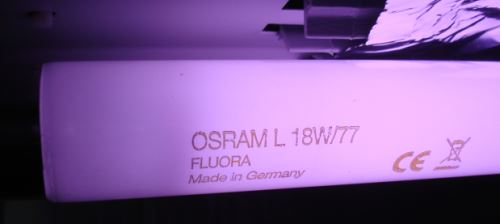 An example of an Osram fluora lamp
An example of an Osram fluora lamp - Yellow rays inhibit the growth of stems, so the peak in the yellow part of the spectrum is suitable for aquarium and stem plants (dracaenas, ficus, some palms).
- Photophilous houseplants, for example, cacti, are optimally illuminated in a combination of light from “warm”, “daylight” and phytolamps.
- The red (pink-violet) color of phytolamps tires the retina of the eye, so they are turned on at night or when there are no people in the room.
ADDITIONS TO THE ARTICLE:
We hope that now you know which better lamp for plants to use exactly in your situation.
After reading all the materials, you will definitely be able to provide the highest quality and most effective lighting and grow beautiful and healthy plants!
We wish that flowers and plants in your home will delight you in any light and at any time of the year!




